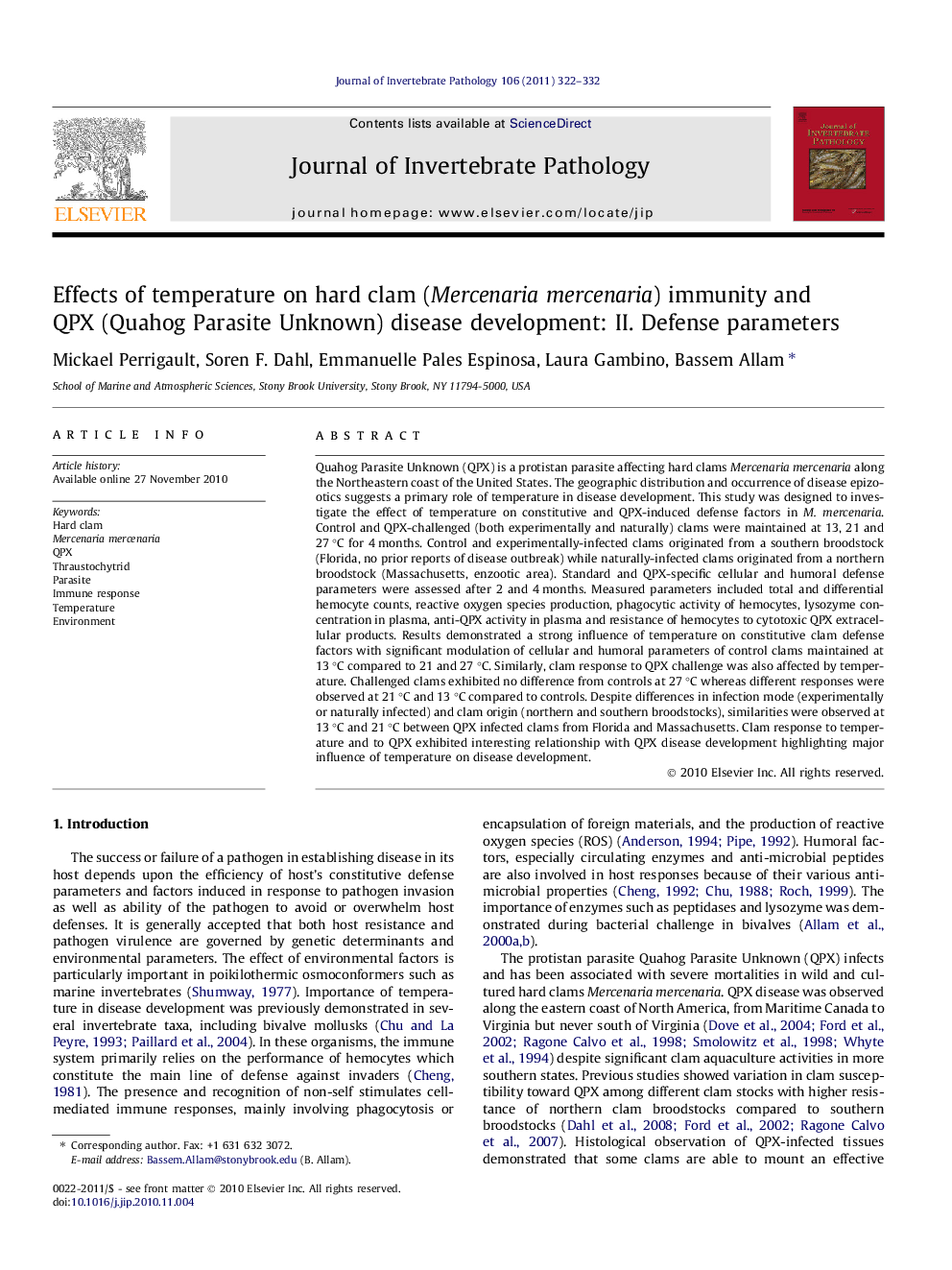| Article ID | Journal | Published Year | Pages | File Type |
|---|---|---|---|---|
| 4558101 | Journal of Invertebrate Pathology | 2011 | 11 Pages |
Quahog Parasite Unknown (QPX) is a protistan parasite affecting hard clams Mercenaria mercenaria along the Northeastern coast of the United States. The geographic distribution and occurrence of disease epizootics suggests a primary role of temperature in disease development. This study was designed to investigate the effect of temperature on constitutive and QPX-induced defense factors in M. mercenaria. Control and QPX-challenged (both experimentally and naturally) clams were maintained at 13, 21 and 27 °C for 4 months. Control and experimentally-infected clams originated from a southern broodstock (Florida, no prior reports of disease outbreak) while naturally-infected clams originated from a northern broodstock (Massachusetts, enzootic area). Standard and QPX-specific cellular and humoral defense parameters were assessed after 2 and 4 months. Measured parameters included total and differential hemocyte counts, reactive oxygen species production, phagocytic activity of hemocytes, lysozyme concentration in plasma, anti-QPX activity in plasma and resistance of hemocytes to cytotoxic QPX extracellular products. Results demonstrated a strong influence of temperature on constitutive clam defense factors with significant modulation of cellular and humoral parameters of control clams maintained at 13 °C compared to 21 and 27 °C. Similarly, clam response to QPX challenge was also affected by temperature. Challenged clams exhibited no difference from controls at 27 °C whereas different responses were observed at 21 °C and 13 °C compared to controls. Despite differences in infection mode (experimentally or naturally infected) and clam origin (northern and southern broodstocks), similarities were observed at 13 °C and 21 °C between QPX infected clams from Florida and Massachusetts. Clam response to temperature and to QPX exhibited interesting relationship with QPX disease development highlighting major influence of temperature on disease development.
Graphical abstractRelationships between temperature and defense parameters in clams. Clams maintained at low temperature (13 °C) displayed significant reduction in constitutive and QPX-induced defense parameters compared to clams maintained at higher temperature (21 °C and above), resulting in the development of QPX disease.Figure optionsDownload full-size imageDownload as PowerPoint slideResearch highlights► Clam defense parameters are modulated by temperature and QPX challenge. ► Low temperature reduces host defenses and is associated to disease development. ► High temperatures stimulate clam defenses and immune response following QPX challenge. ► Similar effects of temperature were observed in clams from different populations.
